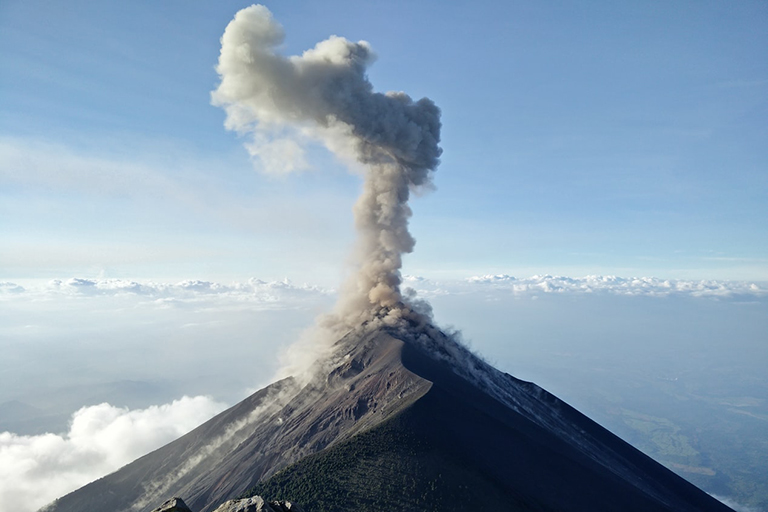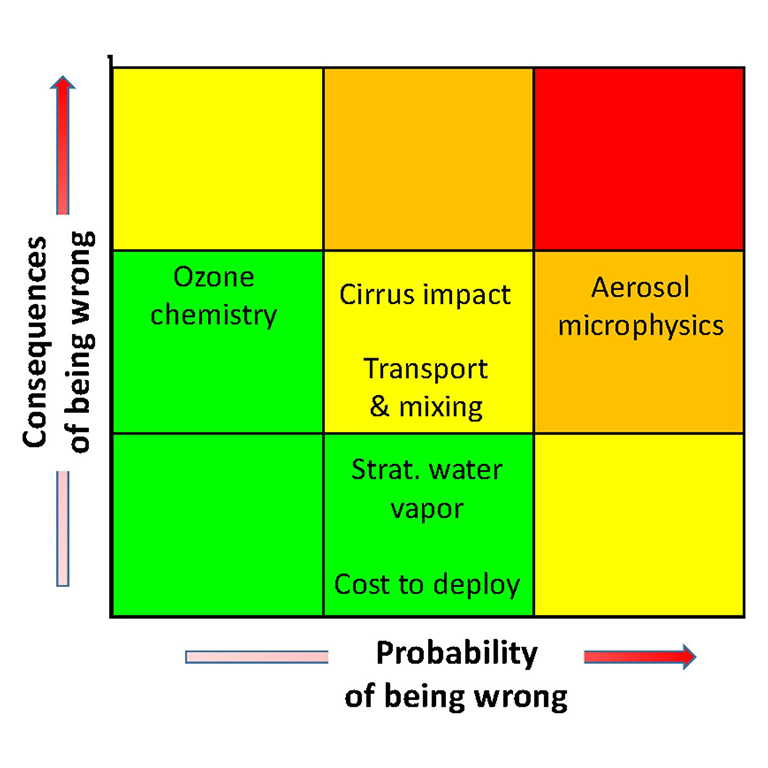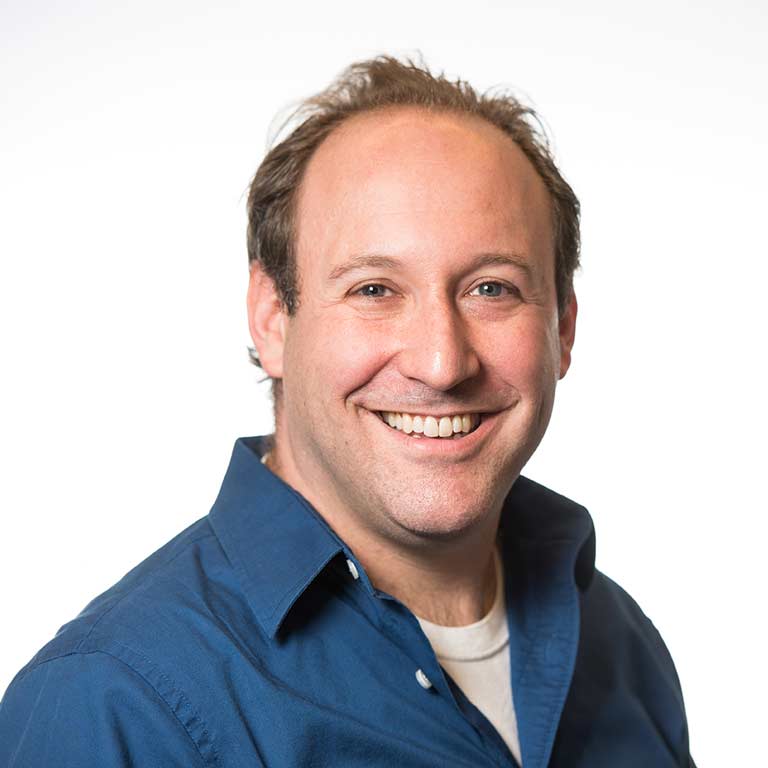In 2019, global carbon dioxide emissions hit a record high despite decades of warnings from scientists that emissions need to be declining in order to avoid the most severe consequences of climate change—extreme heat, sea level rise, and widespread food and water shortages, among other effects.
The struggle to wean the global economy off fossil fuels has spurred some researchers to investigate stop-gap measures that could give humanity more time to transition to a carbon-neutral lifestyle. The mostly commonly discussed methods fall within the scope of solar geoengineering, a form of climate engineering that aims to cool the surface of the earth by reflecting more sunlight back into space.
Ben Kravitz, an assistant professor in IU’s Department of Earth and Atmospheric Sciences, uses climate models to simulate and study the effects of solar geoengineering on the planet. He recently spoke with the ERI Explainer to discuss why society might choose to intervene in the global climate system and where the science currently stands.

The Explainer: What is solar geoengineering and why are people paying more attention to it?
Kravitz: We know climate change is getting bad and society is not acting very quickly to stop some of the worst effects of climate change. And so people are talking about a way that we could temporarily and deliberately intervene in the climate system to offset some of these changes while society ramps up mitigation of greenhouse gas emissions and large-scale carbon dioxide removal or adaptation processes. Can we use this to buy time?
One of the most commonly discussed ideas is putting large amounts of sulfate aerosols—tiny droplets of sulfur—in the stratosphere. We’ve seen this happen during large volcanic eruptions. Among other things, volcanoes pump sulfur into the atmosphere. Those small droplets of sulfur are highly reflective. They reflect some sunlight back to space and that cools the planet. So if nature can do that, maybe we can mimic that process.
The Explainer: Are there other solar geoengineering methods that are being looked at or are sulfate aerosols considered the most feasible strategy?
Kravitz: Sulfate aerosols are probably the most studied idea. There are other methods out there that are being explored, such as marine cloud brightening, where aerosol particles mix with low clouds over the ocean and increase the amount of reflected sunlight. Under certain conditions, if you put the right kind of aerosols into those clouds, it can redistribute the water vapor in those clouds and make the droplets smaller. Smaller droplets are brighter and reflect more sunlight into space.
The Explainer: What are some of the risks and uncertainties surrounding solar geoengineering and sulfate aerosols?
Kravitz: We're still trying to figure that out. Solar geoengineering is not a perfect offset to carbon dioxide. It handles sunlight in very different ways. What all of the models are showing is that it would offset a lot of the effects of carbon dioxide but not all of them.
One of the results we've seen is that if you increase carbon dioxide and offset global warming with stratospheric sulfate aerosols, you actually reduce global precipitation on average.
It’s not that precise of a tool, so we see regional differences in cooling. You can't put a wall in the stratosphere and say, "I only want aerosols here." They go where they go.
However, to some extent we can direct where the aerosols might go. For example, if you put stratospheric aerosols at high latitudes, they'll do different things to the climate than if you put them at low latitudes. If you put them in the southern hemisphere, they will do different things than if you put them in the northern hemisphere. So a lot of the resulting effects of solar geoengineering will depend on how you do it and what you are trying to achieve.
The Explainer: In a forthcoming paper, you present the idea of a risk register to help people evaluate the potential outcomes of solar geoengineering. How might a risk register inform decision making?
Kravitz: If society decides it wants to do geoengineering someday, we need to better understand what we know and what we don't know. Up to this point, a lot of the research into solar geoengineering has been curiosity-driven. There has not yet been a systematic way of cataloging uncertainties. A risk register is a great way to do that.

The idea is that you have two axes: probability and consequence. One way of interpreting that is having one axis that asks, “What's the probability that this side effect will happen or what's the probability that we're wrong about our predictions of the side effect? And on the other axis, “What are the consequences of being wrong?”
So if you're probably wrong about something but it doesn't matter whether you're wrong, you don't care as much about it. If something's really consequential but you know it really well, you don't need to do more research on that. If there's something that has a really high probability of happening and the consequences of getting that wrong are really severe, that's your highest research priority.
As of right now, there is no objective basis for figuring out what the most important uncertainties of solar geoengineering are. I think we need a community-wide effort to actually start to quantify some of these things and figure out what the most important ones are.
The Explainer: What would you say to people who see solar geoengineering as a way to prolong the use of fossil fuels?
Kravitz: It's a terrible idea. If we keep emitting carbon dioxide and we offset the temperature increase through solar geoengineering, we have to do more and more geoengineering every year and we have to do it forever. That's not a sustainable solution. It also increases the risk of what we call termination shock. By termination shock, I mean what happens if you suddenly stop geoengineering.
The carbon dioxide is still in the atmosphere. It's still going to cause warming. So the temperature will rebound to whatever that warming level is within 5 to 10 years. That's massive, rapid climate change that would be almost impossible to adapt to. It might have been better if you never did geoengineering in the first place.
The Explainer: What do you see as the most important steps the solar geoengineering community should be taking in the next five years?
Kravitz: There are a few things. First I think we need to fill out the risk register. What are the most important uncertainties? What do we really need to work on?
Second, we need to get better at understanding regional effects. It's one thing to talk about global temperature and global precipitation, but when I go outside in the morning I don't think about global temperature. I think about if it’s going to rain where I am today. I'm not saying we can ever get that kind of precision, but we need to do better than we are right now.
Another thing we need to think about is impacts. I've spent a lot of time using climate models to study what will happen to temperature, what will happen to precipitation, what will happen to sea ice. What people really care about are things like food security, water security, sea level rise. How do we do that? I think those are some really high priorities.



